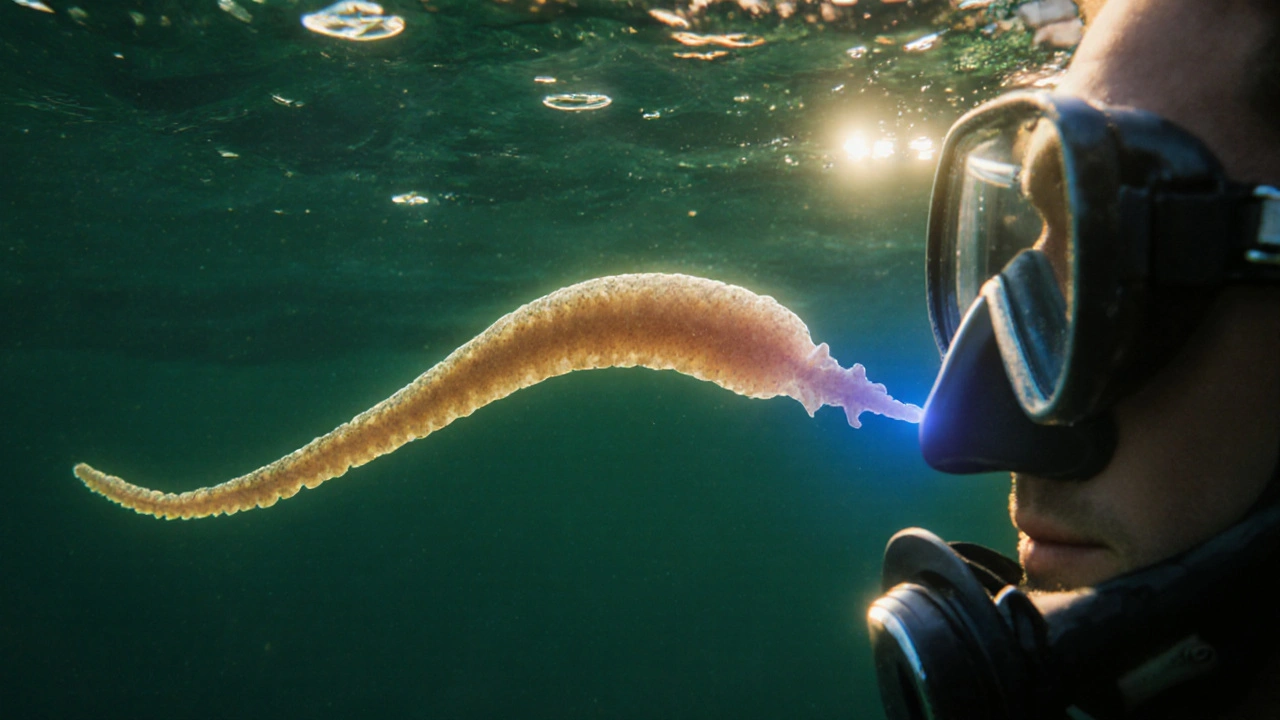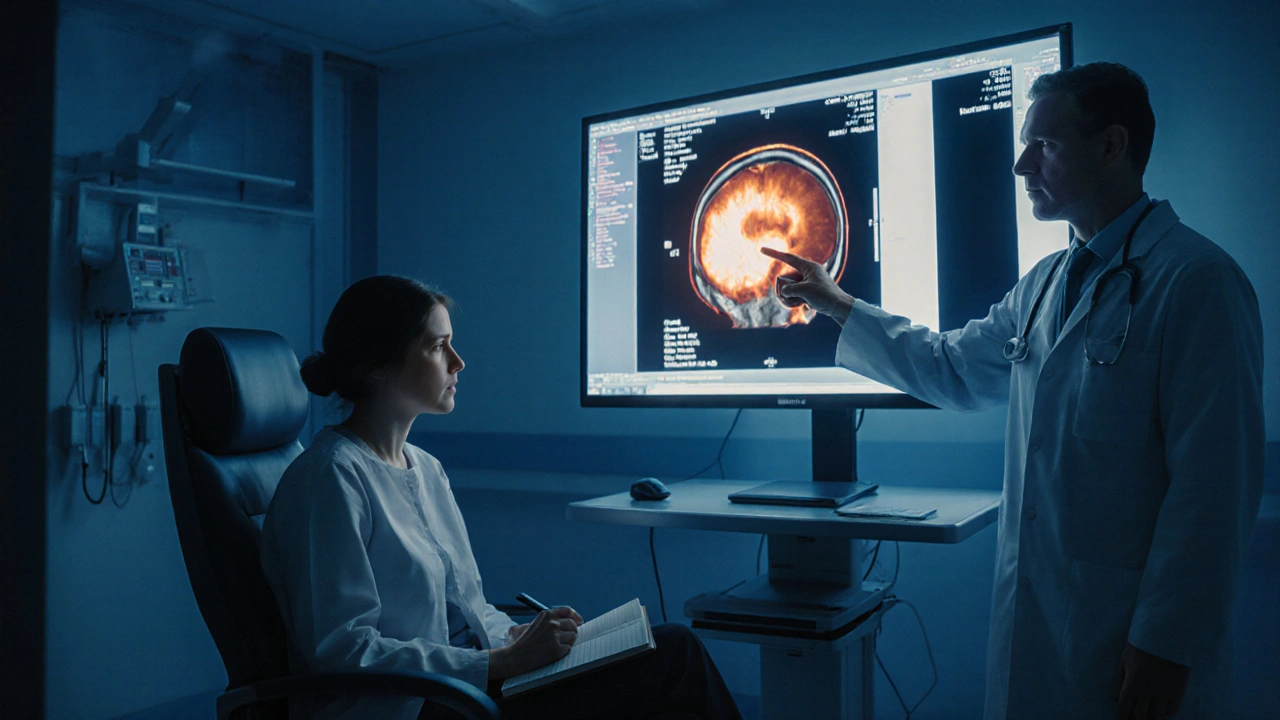
Brain Amoeba Exposure Risk Calculator
Assess Your Risk
Answer a few questions about recent activities to understand your potential risk of amoeba exposure
When you hear the word “amoeba,” you probably picture a tiny, harmless blob swimming in pond water. But certain amoebas can invade the brain, trigger inflammation, and silently shift mood, cognition, and behavior. This article uncovers how amoeba infection can influence mental health, what signs to watch for, and how doctors tackle both the parasite and the psychological fallout.
Key Takeaways
- Some brain‑invading amoebas, like Naegleria fowleri - a free‑living thermophilic amoeba - can cause rapid neuroinflammation that mimics psychiatric crises.
- Even milder infections such as Entamoeba histolytica may lead to chronic fatigue, anxiety, or depressive symptoms through immune‑mediated pathways.
- Early recognition hinges on linking neurological signs (headache, seizures) with subtle mental health changes.
- Treatment often combines antiprotozoal drugs, anti‑inflammatory steroids, and targeted psychotherapy or psychiatric medication.
- Prevention is practical: avoid contaminated water, use sterile eye‑care solutions, and monitor mental health after any severe infection.
What Is an Amoeba Infection?
Amoeba infection is a parasitic disease caused by microscopic protozoa that can colonise the gut, lungs, skin, or central nervous system. The most well‑known varieties include:
- Entamoeba histolytica - the culprit behind amoebic dysentery and occasional liver abscesses.
- Naegleria fowleri - nicknamed the “brain‑eating amoeba,” it thrives in warm freshwater and can breach the nasal mucosa.
- Acanthamoeba - often linked to keratitis in contact‑lens users and, rarely, to granulomatous encephalitis.
While most infections stay in the gut, the three listed above have the potential to cross the blood‑brain barrier and cause direct brain injury.
How Amoebas Reach the Brain
The journey begins when contaminated water or soil enters the nasal passages (as with Naegleria fowleri) or when the parasite spreads from the bloodstream during a systemic infection (as with Entamoeba histolytica). Once inside the cribriform plate, the amoeba infiltrates the olfactory nerves and breaches the blood‑brain barrier, a tightly regulated filter that normally shields the brain from pathogens.
This breach triggers neuroinflammation, a cascade of cytokines and immune cells that can damage neurons, raise intracranial pressure, and alter neurotransmitter balance. The result is not just physical symptoms like headache or seizures, but also changes in mood, memory, and behavior.

Mental Health Symptoms Linked to Brain Amoebiasis
Doctors have documented a spectrum of psychiatric signs that surface during or after an amoeba‑related brain infection:
- Cognitive dysfunction - slowed thinking, trouble concentrating, and short‑term memory lapses.
- Depression - persistent low mood, loss of interest, and feelings of hopelessness, often linked to cytokine‑induced serotonin dysregulation.
- Anxiety - heightened worry, panic attacks, and restless agitation that may precede seizures.
- Psychosis - rare but reported in severe cases, with hallucinations or delusional thinking.
These symptoms can masquerade as primary psychiatric disorders, leading clinicians to prescribe antidepressants or anxiolytics without addressing the underlying infection. That’s why a high index of suspicion is vital, especially when mental health changes follow a recent bout of fever, meningitis‑like symptoms, or exposure to warm freshwater.
Diagnosing the Hidden Connection
Standard infection work‑ups focus on stool microscopy, serology, or PCR for Entamoeba. When the brain is involved, additional steps become necessary:
- Neuroimaging - MRI or CT scans reveal edema, focal lesions, or hemorrhagic necrosis characteristic of amoebic encephalitis.
- CSF analysis - Lumbar puncture may show elevated protein, low glucose, and neutrophilic pleocytosis; PCR can directly detect amoebic DNA.
- Psychiatric assessment - A structured interview helps differentiate infection‑driven mood changes from primary mood disorders.
Because many laboratories lack rapid PCR for rare amoebas, clinicians often rely on a combination of clinical suspicion, imaging, and empirical therapy.
Treatment Strategies That Cover Both Infection and Mood
Therapy must hit two targets: eradicate the parasite and mitigate neuroinflammation that fuels psychiatric symptoms.
- Antiprotozoal medication - Drugs such as miltefosine, metronidazole, and amphotericin B are first‑line for Naegleria and Acanthamoeba infections.
- Corticosteroids - Short courses of dexamethasone can blunt the inflammatory surge, lowering intracranial pressure and improving mood.
- Psychotherapy - Cognitive‑behavioral therapy (CBT) and supportive counseling address anxiety and depressive thoughts while the brain heals.
- Psychiatric medication - Selective serotonin reuptake inhibitors (SSRIs) or atypical antipsychotics may be needed temporarily, but dosages should be adjusted once inflammation subsides.
Regular follow‑ups with both infectious‑disease specialists and mental‑health professionals ensure that medication side‑effects are caught early and that recovery is monitored holistically.

Prevention: Simple Steps to Keep Your Brain Safe
Because the organisms live in warm, stagnant water, everyday habits can dramatically cut exposure risk:
- Water safety - Avoid submerging your head in hot tubs, poorly maintained pools, or freshwater lakes that exceed 25°C (77°F). If you do swim, wear a nose clip.
- Personal hygiene - Use sterile solution for contact lenses; never use tap water to rinse them.
- Food handling - Wash fresh produce thoroughly; cook meat and fish to safe temperatures to prevent gut‑based amoebas.
- Mental health monitoring - After any severe infection, keep a diary of mood, sleep, and cognition. Early reporting to a clinician can accelerate treatment.
While you can’t eliminate every environmental amoeba, these precautions reduce the odds of a dangerous brain invasion.
Comparison of Common Brain‑Invading Amoebas
| Species | Typical Entry Route | Primary Neurological Signs | Most Common Mental‑Health Effects | First‑Line Treatment |
|---|---|---|---|---|
| Naegleria fowleri | Nasal inhalation of warm freshwater | Rapid onset meningitis, seizures | Acute anxiety, psychosis, severe depression | Miltefosine + amphotericin B |
| Acanthamoeba spp. | Direct inoculation via wounds or contaminated eye solution | Granulomatous encephalitis, focal deficits | Chronic depression, cognitive slowing | Miltefosine + fluconazole |
| Entamoeba histolytica | Oral ingestion of cysts, bloodstream spread | Liver abscess, occasional cerebral abscess | Fatigue‑related anxiety, depressive mood | Metronidazole + paromomycin |
Frequently Asked Questions
Can a mild amoeba infection cause depression?
Yes. Even when the parasite stays outside the brain, systemic inflammation releases cytokines that interfere with serotonin production, leading to low mood and fatigue. Treating the infection often improves depressive symptoms.
What are the early warning signs that an amoeba has entered the brain?
Sudden severe headache, fever, neck stiffness, and confusion are classic. If they appear together with unexpected anxiety, agitation, or visual disturbances after swimming in warm water, seek emergency care.
Is there a test that can detect brain‑affecting amoebas quickly?
Polymerase chain reaction (PCR) on cerebrospinal fluid is the fastest, but not all hospitals have it. In practice, doctors start empirical therapy based on imaging findings and exposure history while awaiting lab confirmation.
Can I use over‑the‑counter anti‑inflammatory meds to treat the mental health effects?
OTC NSAIDs may relieve mild headache but won’t address the deep neuroinflammation caused by an amoeba. Prescription steroids are required under medical supervision.
Should family members be screened after someone is diagnosed?
Screening is advised only if they share the same exposure (e.g., using the same pool). Stool testing for Entamoeba and counseling on water safety are typical preventive steps.
Next Steps
If you or someone you know has experienced a recent high‑fever illness, especially after swimming in warm water, watch for any sudden changes in mood, sleep, or cognition. Bring these observations to a primary‑care physician or an infectious‑disease specialist. Early diagnostic imaging and a combined treatment plan that includes both antiprotozoal drugs and mental‑health support can dramatically improve outcomes.
Remember, protecting your brain starts with safe water habits and paying attention to the mind‑body signals that follow any serious infection.





Avinash Sinha
October 13, 2025 AT 20:29Whoa! The hidden link between amoebic infections and mental health is a grotesque dance of microbes and minds. Imagine diving into a serene lake, only to invite microscopic terrors that could tangle with your thoughts. This calculator isn’t just a gimmick; it’s a neon flashing sign that says “Beware the unseen!” If you’ve been splashing around, you might want to double‑check those lenses and that tap water. Don't let the quiet water lull you into complacency – the brain is watching.
ADAMA ZAMPOU
October 23, 2025 AT 02:42One must contemplate the epistemic bridge that connects peripheral pathogens to central cognition. The article posits a corollary: environmental exposure may precipitate neuropsychological perturbations, a hypothesis warranting rigorous scrutiny. While the risk calculator offers heuristic insight, it remains a didactic instrument, not a diagnostic arbiter. The scholarly community should therefore integrate epidemiological data with neuroimmunological mechanisms. In doing so, we may elucidate whether causation or mere correlation underpins the observed phenomena. Such deliberation embodies the essence of scientific humility.
Liam McDonald
November 1, 2025 AT 08:55I feel for anyone who’s enjoyed a swim and now worries about unseen invaders their mind may feel tangled but remember you’re not alone in this concern and seeking professional advice is always a wise step
Adam Khan
November 10, 2025 AT 15:09Firstly, the phrase “submerge your head underwater” is tautological – to submerge inherently implies being underwater, thus the sentence is redundant. Moreover, the risk algorithm employs a linear additive model where each “yes” answer contributes a constant weight of 2; this oversimplifies the multifactorial nature of amoebic pathogenicity. From an epidemiological standpoint, the tool neglects confounding variables such as immunocompromised status or prior ocular trauma. While the UI is functional, the underlying statistical model should be refined to incorporate logistic regression or Bayesian inference for predictive robustness.
rishabh ostwal
November 19, 2025 AT 21:22It is utterly reprehensible that society continues to trivialize the peril of waterborne amoebae while lauding carefree recreation. One must question the ethical calculus that permits individuals to jeopardize their neural integrity for fleeting amusement. The onus lies not merely with the individual but with public health agencies that fail to disseminate this critical knowledge. If we persist in this willful ignorance, we betray a collective moral responsibility toward future generations. Let this be a clarion call to elevate vigilance over complacency.
Kristen Woods
November 29, 2025 AT 03:35Listen up folks – this isn’t some cute lil’ quiz, it’s a wake‑up call that could save your brain! If you’ve ever thought “just a swim won’t hurt,” think again – the amoeba can silently hitch a ride on your lenses and creep into your eyes. Dont ignore the red flags, the risk meter isn’t a joke. The world needs to stop acting like this is a trivial matter, cause mental health ain’t no game.
Carlos A Colón
December 8, 2025 AT 09:49Oh great, another way to feel guilty about swimming.